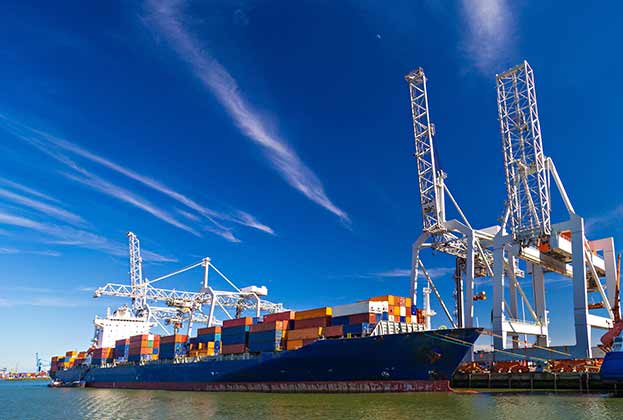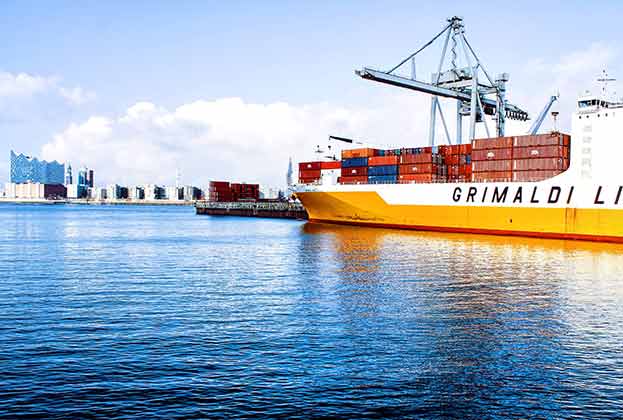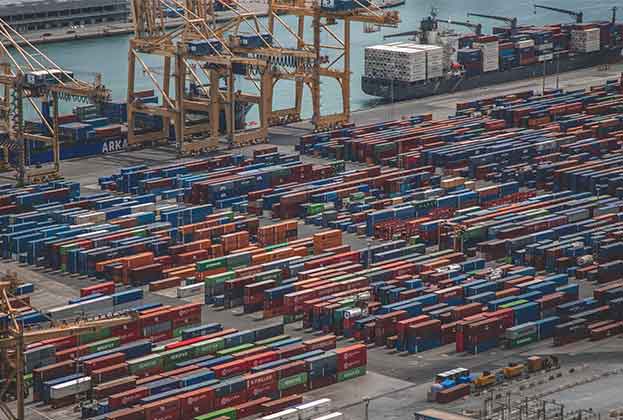China/US trade relations and energy markets are influencing trade patterns
China’s Belt and Road Initiative (BRI)
China is developing the Belt and Road Initiative to improve trade links with Europe, through providing long-term government infrastructure loans (see map). Most of the countries China wishes to involve are developing nations, and so far, 60 nations have expressed an interest in BRI. China has so far gained a foothold in Europe’s three largest ports: respectively Euromax in Rotterdam, of which it owns 35%; Antwerp, in which it holds a 20% stake; and Hamburg, where it is set to build a new terminal.
China’s increasing sphere of influence on Europe has, however, caused concern for the EU. Italy signed up for BRI in March 2019 as the first developed country to join the programme, as its European Union allies have expressed a further concern. According to Capital Economics, Italy is forecast for 0% economic growth in 2020, and although Greece’s economy is expected to grow 1.5% this year, infrastructure investment is being warmly received. Huge levels of Chinese investment in Piraeus, Greece has generated new trade routes into Central and Southern Europe, which has decreased transit travel time to China by 8–9 days, compared with the North European ports, according to EY. Piraeus is now Europe’s sixth-largest container port, and prime logistics rents have subsequently risen by 20% over the past three years. Despite this, pricing remains attractive, with prime logistics yields at 8.5%, compressing 75 bps over the previous 12 months.
Chinese city, Chengdu, is now rail-linked with Łódź, Poland, with approximately 50 freight trains operating each way every month. China intends to extend the BRI initiative as far as Rotterdam and fully implement the programme by 2049. A total of €30bn of Chinese foreign direct investment in the EU took place during 2017, most noticeably the €12.25bn acquisition of the Logicor portfolio in 2017. We expect further Chinese capital will target strategically located logistics assets in the next decade and will heighten investor interest for prime logistics space in Poland.
In the shorter term, US tariffs imposed on imports of EU goods in October 2019 could negatively affect US-EU trade volumes during 2020-21. As a result, this could have a negative impact on the levels of logistics occupational demand in proximity to Europe’s established ports. Thus, as EU-China trade increases, supply chains will need to adjust, which could shift trade of goods from Western Europe’s established ports, to road and rail which are better placed to serve the Chinese market.
Energy markets and ESG
As part of the EU’s strategy to improve security of supply, the bloc is diversifying its source of imports. The US has become a net exporter of liquefied natural gas (LNG) since 2018, and the EU imported 33% of US exports last year, up from 11% the previous year. Several of the EU’s established ports are not designed to cater for LNG arrivals, and although trade in this sector is still in its infancy, the number of US vessels entering the EU increased fourfold between 2018 and 2019. This is creating new demand for LNG terminals, before being regasified and transported to nearby specialist storage plants.
Spain currently has more LNG import terminals than any other European country, with Barcelona being the largest terminal. In order to diversify, the European Union approved funding for Croatia to construct a floating terminal at Krk island to transport up to 2.6 billion cubic metres of LNG into Croatia each year from 2021. €352m of EU funding has been committed to the extension of the LNG terminal in Swinoujscie, Poland.
Maritime authorities are under more pressure to implement clean technology and develop offshore renewable energy. It is estimated that for every tonne of goods transported by sea, 16g CO2 is released, below the 62g CO2 released by road. New regulation from the International Maritime Organisation (IMO) intends to reduce carbon emissions by 50% by 2050 to ensure ports are environmentally sustainable. Likewise, EU regulation is delaying new building projects take place in the Netherlands during 2020-21, due to the way Dutch builders and farmers are dealing with nitrogen emissions, which is likely to push up the value of existing real estate.
Port authorities are also regulating the methods by which imported containers are leaving the ports, with set allocations for rail, road and barge. Increased pressure on institutional investors to acquire environmental logistics assets will increase demand nearer to port and rail terminals to reduce emissions.
Read the articles within Spotlight: European Port Logistics - Where Next To Invest? below.
.jpg)


